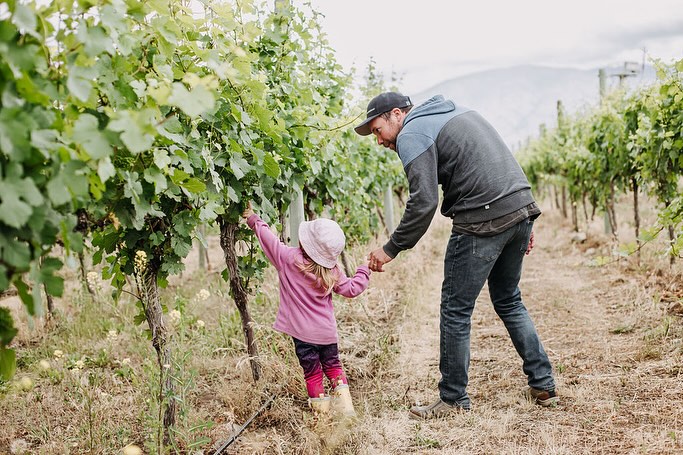Exploring the Vibrant Wine Worlds of Canada, USA, and Mexico

The world of wine has long been dominated by classic Old World regions in Europe, but in recent years, New World countries have increasingly emerged as key players on the global stage. Among these, Canada, the USA, and Mexico have all gained recognition for producing exceptional wines, each with its own distinct flavors, traditions, and growing regions. Let's take a closer look at the state of the wine world in these three countries and explore the wines that are putting them on the map.
Canada: A Cool-Climate Haven for Exceptional Wines
Canada may not have the centuries-old winemaking history of its European counterparts, but it has quickly become a respected force in the wine industry. Particularly in British Columbia and Ontario, Canada’s cool-climate regions are producing high-quality wines that rival the best of the Old World.
Key Wine Regions:
-
British Columbia (Okanagan Valley): The Okanagan Valley is Canada's premier wine-producing region, with a climate that mirrors that of the Rhône Valley in France. It is known for producing both red and white wines, with varieties like Merlot, Cabernet Franc, Chardonnay, and Pinot Gris excelling in this region. The valley's diverse microclimates allow winemakers to experiment with a range of varietals, and many wineries are also experimenting with natural and organic wines.
-
Ontario (Niagara Peninsula): Known for its world-class ice wine, Niagara is also home to a growing number of vineyards making exceptional table wines. The cool climate and limestone-rich soils here allow for crisp, fresh whites like Chardonnay and Riesling, as well as elegant reds such as Pinot Noir and Cabernet Franc. Ice wine remains the crown jewel of Ontario, with the region being the largest icewine producer in the world.
What’s on the Horizon:
Canada's wine industry continues to grow, with an increasing number of boutique wineries and innovative winemaking techniques. Other thriving Canadian regions to consider are Annapolis Valley, Nova Scotia, Eastern Townships, Quebec, Similkameen Valley, BC, and the Cowichan Valley on Vancouver Island.
There's a growing trend towards sustainable practices, and Canada's wine regions are becoming more recognized for their unique terroirs, with wine tourism also seeing a significant rise. Expect to see more Canadian wines on the world stage, especially as climate change helps to extend growing seasons and diversify the varieties being grown.
USA: Innovation Meets Tradition in the Land of Wine
The United States is a global powerhouse in the wine world, with California being the undisputed leader, but it's not just California that’s making waves. From Oregon to New York, the USA is brimming with diverse wine regions, producing a wide array of styles and varietals.
Key Wine Regions:
-
California (Napa and Sonoma Valleys): California is the largest wine producer in the USA, and Napa Valley is one of the most famous wine regions in the world. Known for bold Cabernet Sauvignon and rich Chardonnay, Napa continues to lead the way in innovation, experimenting with new blends, and embracing sustainability practices. Nearby Sonoma offers cooler climate wines like Pinot Noir and Chardonnay, with more emphasis on organic farming.
-
Oregon (Willamette Valley): Known for its world-class Pinot Noir, the Willamette Valley in Oregon has gained international acclaim. The region's cool climate and volcanic soils create an ideal environment for producing elegant, terroir-driven wines. Oregon’s commitment to sustainability and organic practices has made it a favorite among eco-conscious wine lovers.
-
Washington State (Columbia Valley): Washington has become known for its outstanding Cabernet Sauvignon, Merlot, and Syrah. With its unique climate and proximity to the Pacific Ocean, the region is one of the most exciting for red wines in the United States. Expect more diversity in white wines, such as Riesling and Chardonnay, to gain recognition as well.
What’s on the Horizon:
The USA's wine industry is continuing to innovate and diversify. With climate change creating challenges in traditional growing regions, wine producers are seeking out new areas to explore, such as Texas, Michigan, and even Alaska. The future of US wines looks promising, especially with the rising interest in natural and biodynamic wines, sustainable practices, and a deeper focus on local terroirs.
Mexico: The Underrated Gem of the Wine World
While Mexico is often associated with tequila and mezcal, its burgeoning wine industry is gaining significant attention. Wine production in Mexico has a long history, dating back to the 16th century, but it has only recently started to gain recognition on the global stage for its high-quality wines.
Key Wine Regions:
-
Baja California (Valle de Guadalupe): The most famous wine region in Mexico, Valle de Guadalupe, is located in Baja California. This region benefits from a Mediterranean-like climate and produces wines that combine both European and New World influences. It’s particularly known for its bold reds such as Cabernet Sauvignon, Tempranillo, and Syrah, as well as aromatic whites like Chenin Blanc and Sauvignon Blanc.
-
Coahuila: The Coahuila region is home to some of the oldest vineyards in the country and is known for producing full-bodied red wines. The region's high-altitude climate allows for complex, high-acid wines, often with a minerally edge.
What’s on the Horizon:
Mexico’s wine scene is one of the best-kept secrets, and its wines are slowly but surely making their way onto international wine lists. As interest in alternative wine regions grows, Mexican wines will likely become more widely recognized, especially as new generations of winemakers bring innovation to the industry while staying true to their heritage. Expect to see Mexico’s wine tourism scene grow, especially in Valle de Guadalupe, which has become a hotspot for travelers seeking great food, wine, and culture.
Conclusion: A Thriving Future for North American Wines
The wine industries in Canada, the USA, and Mexico are all on the rise, with each country contributing something unique to the global wine world. Canada’s cool-climate regions are making waves with crisp whites and elegant reds, the USA is continuing its innovative streak with new regions, and Mexico is emerging as an exciting wine destination, producing wines that reflect its rich history and diverse landscapes. As climate change influences the global wine landscape, these regions will continue to experiment and adapt, pushing the boundaries of what is possible in the world of wine.








Leave a comment